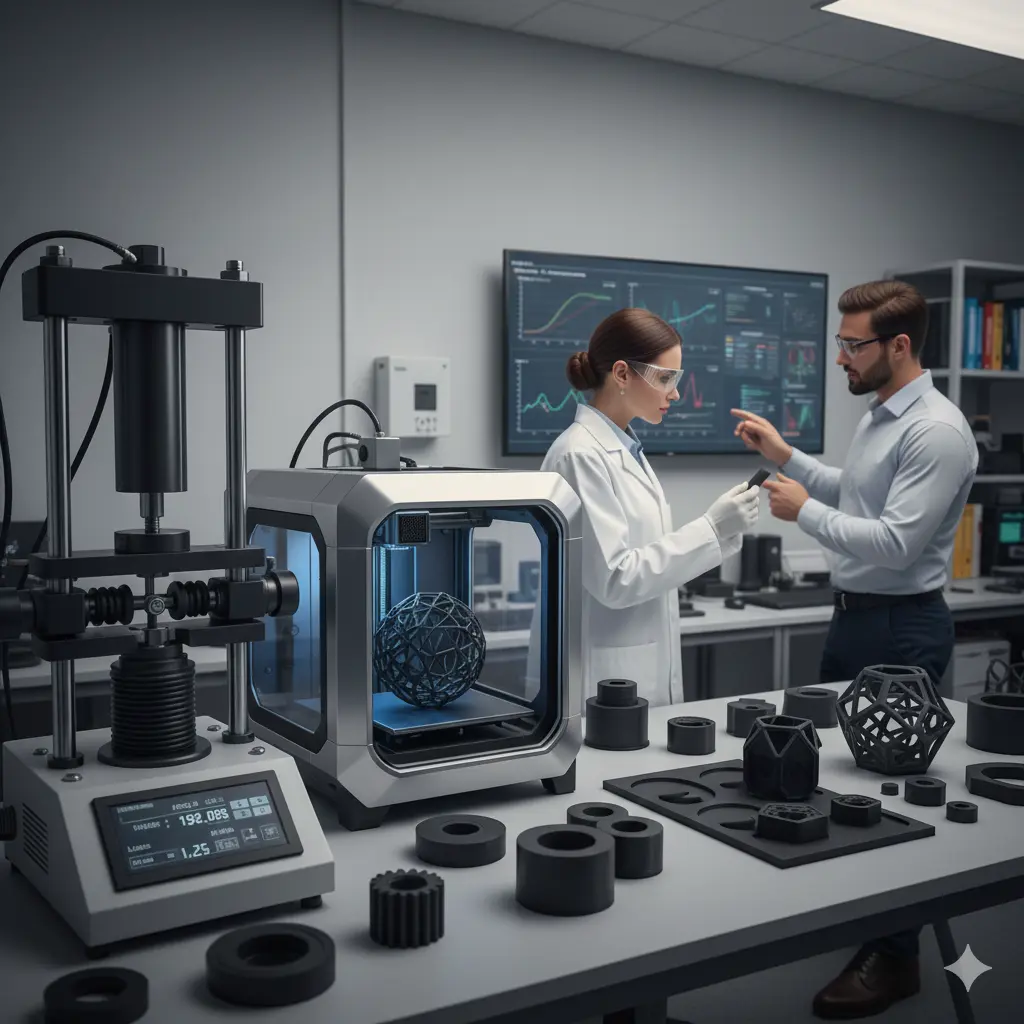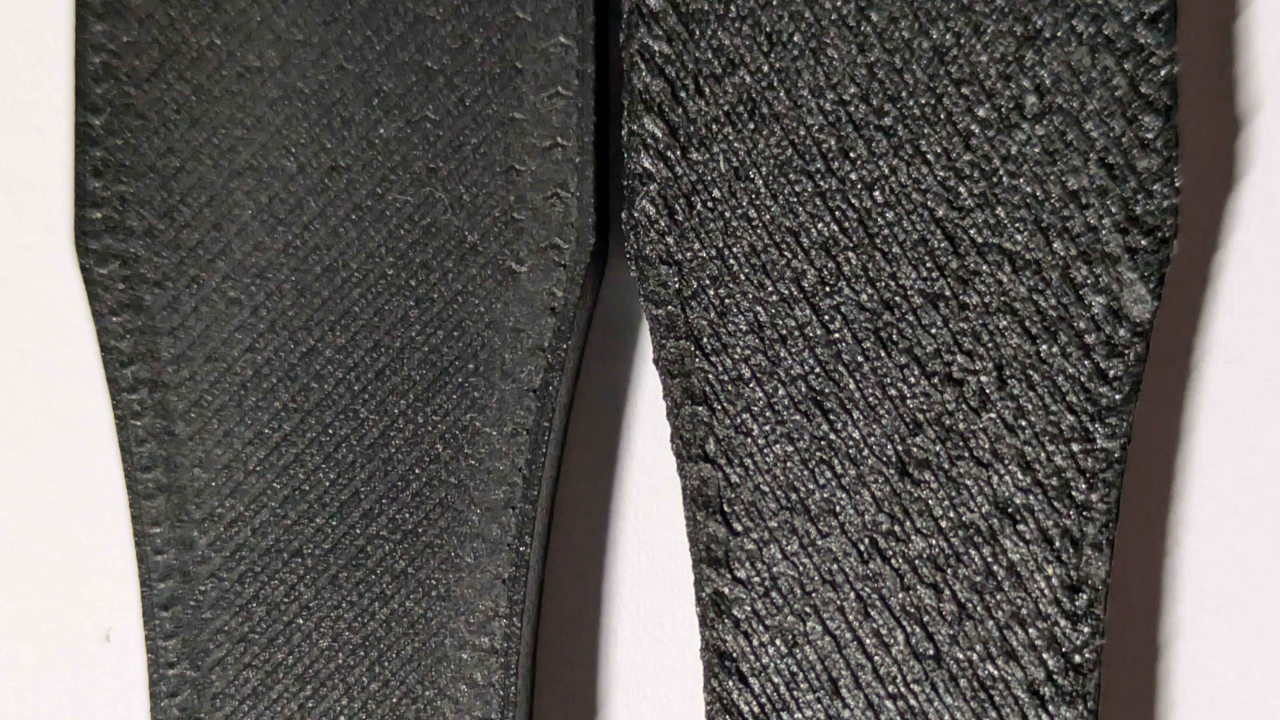Understanding the Numbers: Tensile Data Collection and Saving Time with Automation
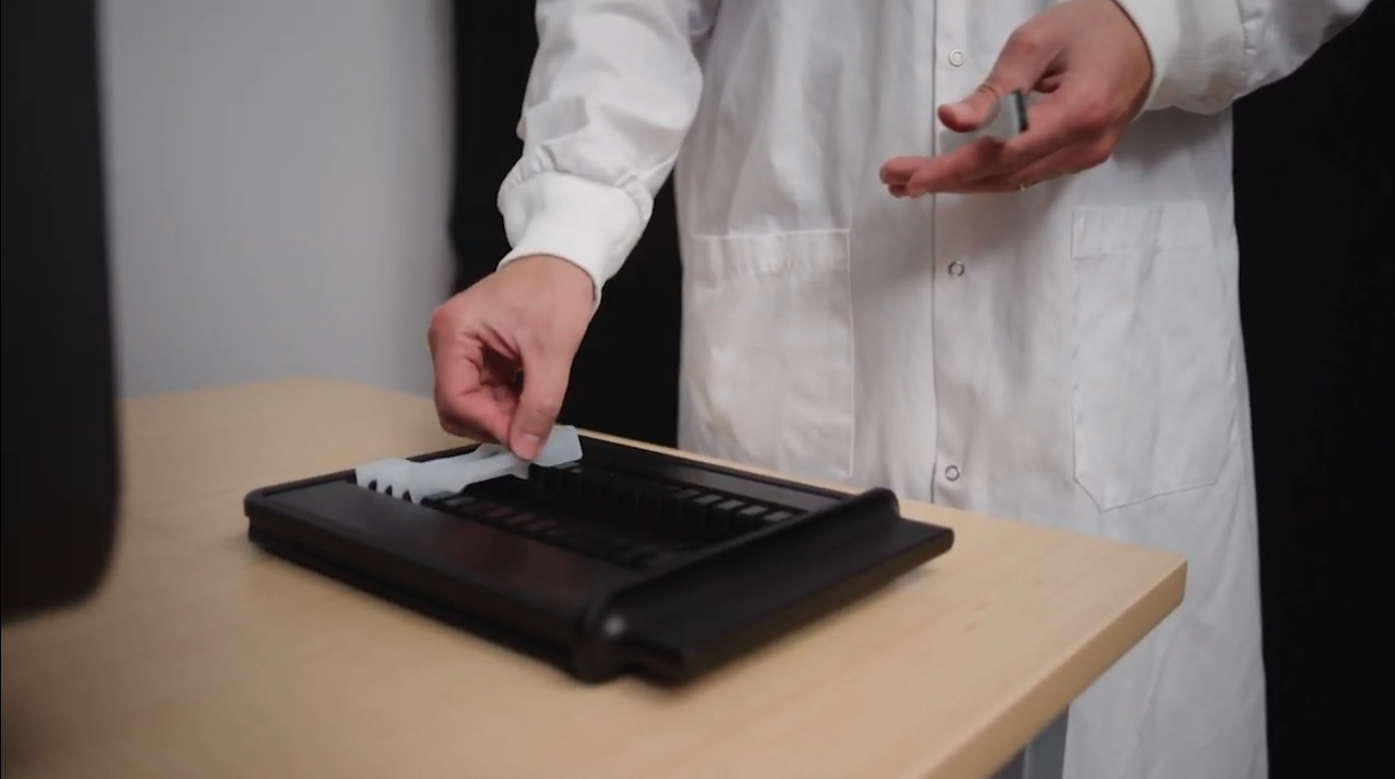
Learn how to understand and use tensile testing data for better material choices. Explore the importance of centralized data and how automated systems like LabsCubed's CubeOne and CubeTen improve lab efficiency and testing consistency.
For a detailed analysis of key tensile properties and data processing, you can read our previous article: What is Tensile Testing & Why it Matters in Materials Labs
Let’s Get Started
In the world of materials, making sure a product works as it should means understanding how the material performs under specific loads. Tensile testing helps by showing how materials react to stress, giving us important numbers about their strength and flexibility.
But getting those numbers is just the start. The real power comes from understanding and using the data that comes out of each test. This article will look at why data from tensile testing is so important, how to make sense of it, and how LabsCubed machines make handling this data much easier and more reliable.
From Test to Data: What You Get
Every time a material is pulled in a tensile test, a lot of information is collected. This includes the force applied and how much the material stretches. This raw information is then used to figure out key material properties like ultimate tensile strength, yield strength, and modulus of elasticity.
The main output from a tensile test is a stress-strain curve.This curve is like a unique fingerprint for each material, showing its behavior from start to break. Figure 1 shows the generated stress-strain curves in the LabsCubed portal from previously collected tensile tests. Manually getting accurate measurements and then plotting these curves can be time-consuming and prone to human error.
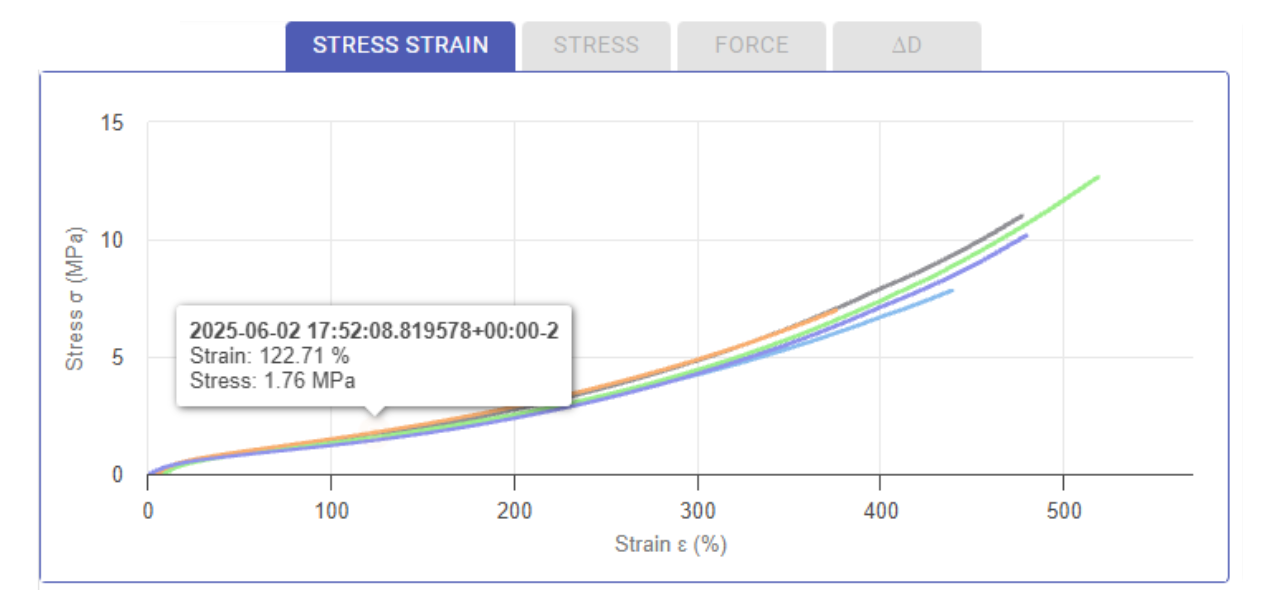
Making Sense of the Numbers: Understanding Your Data
Understanding the stress-strain curve and the numbers it provides is key to choosing the right material.
From this curve, essential properties are found:
- Ultimate Tensile Strength (UTS) - the highest stress a material can handle before it starts to break.
- Yield Strength - the point where the material starts to change shape permanently.
- Elongation at Break - how much the material stretches before it snaps, showing how flexible it is.
- Young's Modulus (Modulus of Elasticity) - how stiff the material is.
It's important to note that the numbers derived from the curve can vary depending on the material and testing rules. For example, with plastics (ASTM D638), the modulus of elasticity (also known as Young’s Modulus) might be found using a specific "0.2% offset method". But for rubbers (ASTM D412), tests focus on the stress needed to stretch the material to specific lengths (like 100% or 200%) to compare how stiff different rubbers are.
The Power of Centralized Data
Once tests are done, having all the results in one place is vital. When data is scattered, it's hard to find, compare, and use effectively.
A central system, like the LabsCubed Portal, solves this. This portal lets users:
- Look at stress-strain curves in an interactive way.
- Review and compare results from many tests.
- Export data easily (like to CSV or PDF files)
- Even connect with other lab systems (like LIMS or ERP) to streamline workflows.
This makes understanding and using your test data much simpler and faster. Figure 2 shows a screen capture of the LabsCubed Portal. The table underneath explains the features of this centralized system. A live walk through of the portal is shown in Figure 3.
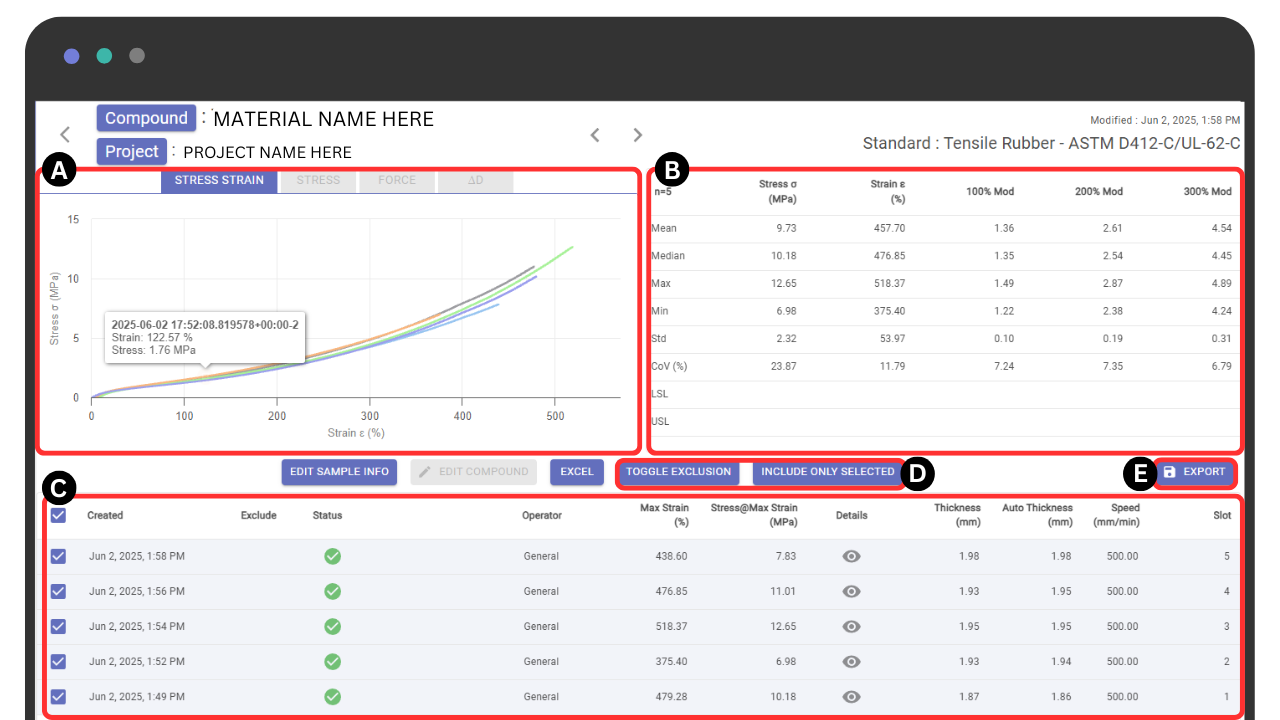

Saving Time and Ensuring Consistent Results: The Automated Advantage
Manual tensile testing can lead to slow and inconsistent results because of human error at almost every step. Factors such as how a sample is placed or measured can change the outcome, even with calibrated machines. This takes up a lot of valuable time that could be spent on deeper analysis or other tasks.
This is where automated systems like LabsCubed's CubeOne (for rubbers) and CubeTen (for plastics) change the game. They are designed to automate key parts of the testing process, directly solving many lab challenges:
- Automated Measurements: Machines like CubeTen and CubeOne automatically measure sample thickness (and width for CubeTen). This means no more manual errors from rulers and calipers.
- Precise Loading and Gripping: The systems automatically align and grip each sample. This removes guesswork and ensures each test starts consistently, reducing breaks outside the measured area.
- Increased Efficiency: CubeOne can test up to 12 samples at a time, and CubeTen up to 15 samples. This high capacity, combined with automation, means labs can run many more tests quickly and without needing constant attention from technicians. CubeOne alone can save up to 85% of a team's time.
- Consistent Results: By taking human variability out of key steps, these automated systems provide much more consistent and repeatable data across different tests, operators, or even different lab locations.
Automating these steps not only saves time but also gives you data you can truly trust thanks to consistency in the testing procedure. A traditional tensile test using a Universal Testing Machine often involves manual steps that add up. A technician must carefully place the sample in the machine's clamps (crossheads) and attach the contact extensometer. Setting up the testing software also takes time. These initial steps alone can take upwards of 8 minutes.
After the test finishes, processing the raw data – like converting units, creating the stress-strain curve, and pulling out key results – can take another 10 or more minutes.
This means at least 18 minutes per test. Since standards typically require at least three samples for each material (as per ASTM E111-17 for modulus), this time quickly adds up. Automation through LabsCubed products removes the need for manual handling during testing and data processing.
With these systems, the most time-consuming step is simply loading the samples into a tray. See Figure 4 for a workflow comparison of both of these test methods.
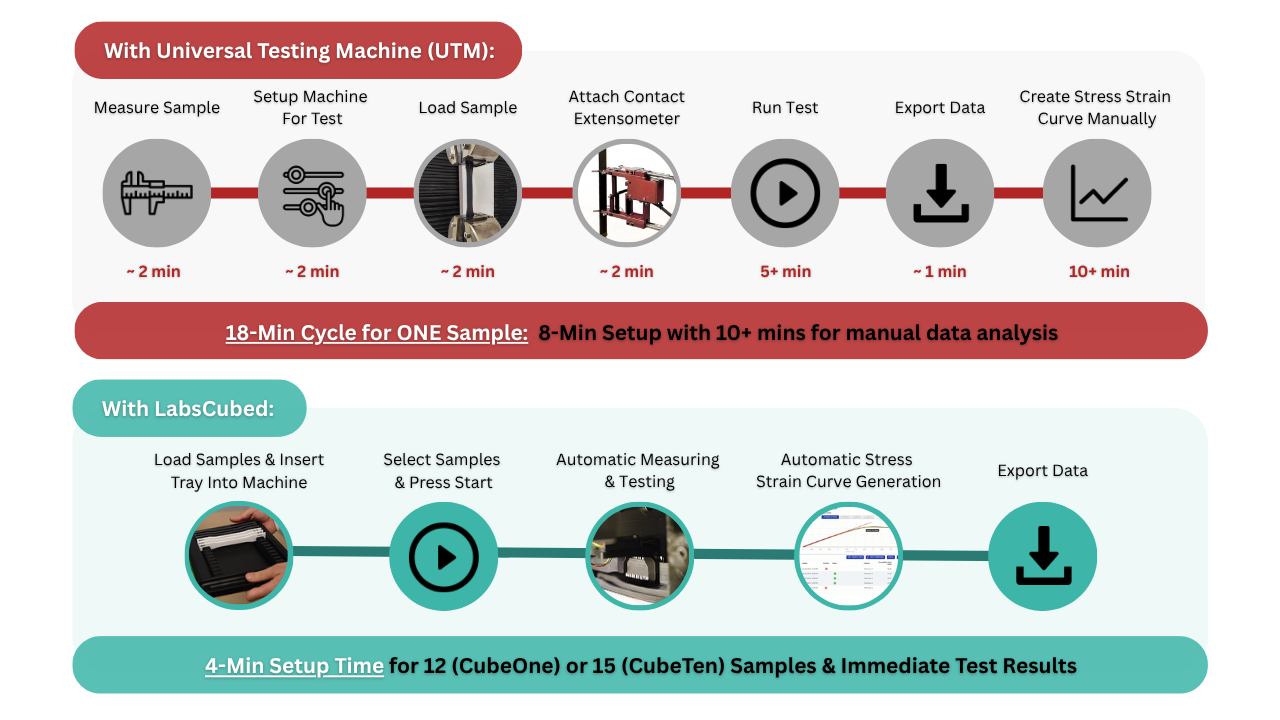
Summary
Understanding and managing data from tensile testing is essential for making smart material choices and creating reliable products. While traditional methods have their hurdles, modern automated systems like LabsCubed's CubeOne and CubeTen offer powerful solutions.
By automating measurements, improving consistency, and providing clear data management, these systems help labs get accurate results. Choose automation to gain deeper insights into your materials and drive better product development.
